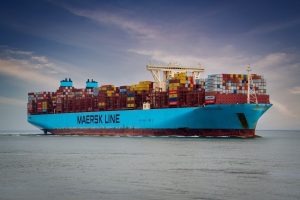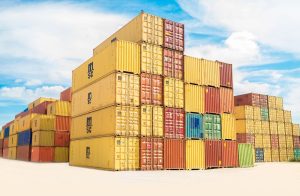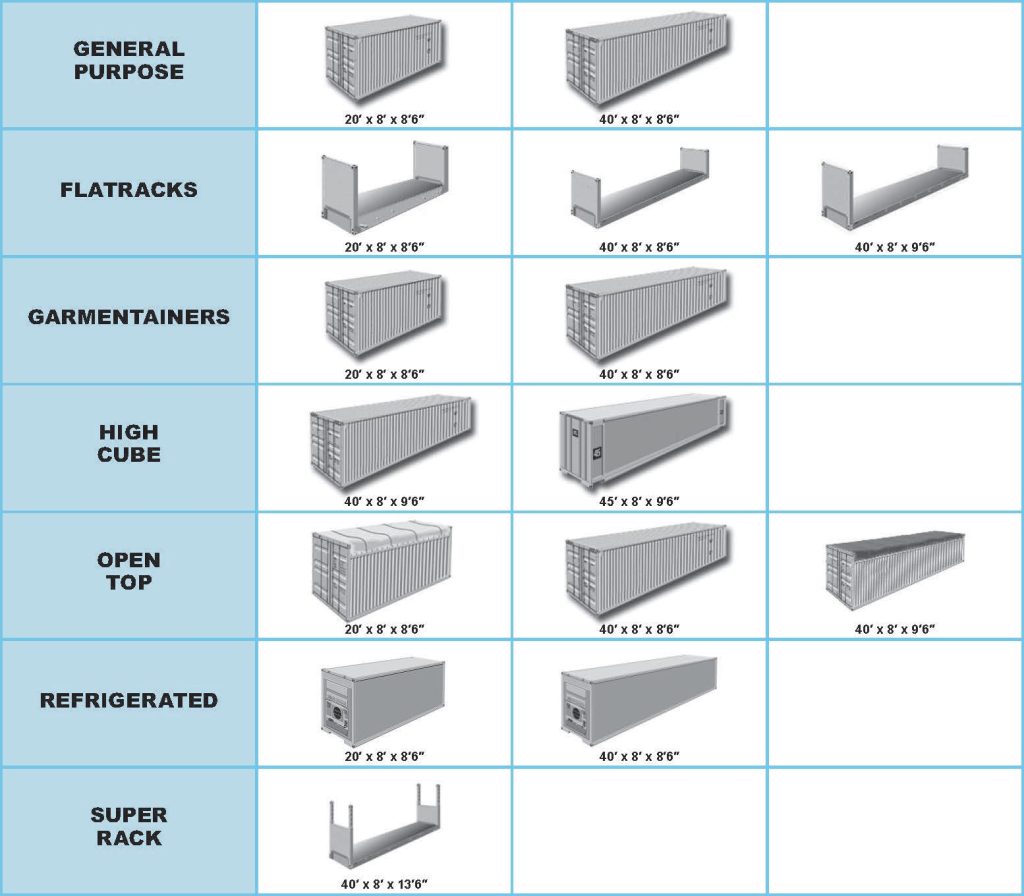4.3 Importance of Containers in International Transportation
Learning Objective
- Assess infrastructure and equipment types used in different modes of transportation.
Often goods move intermodal by using several transport modes in a single container along the entire route. Intermodal transportation has excellent advantages, such as reducing the time and the chance of freight damage, flexibility, and secure goods flow. If the company needs to deliver cargo quickly to their destination and over a short distance, they prefer to choose intermodal transportation on the road. The freight will be delivered in the shortest time to their last destination. Regarding sea freight intermodal transport, it is the cheapest way to move cargo, allowing for the export and import of large-scale bulk, despite a long transportation time. The implementation time to organize shipment using rail transport will take several working days. On the other hand, the cost of transporting freight by rail will be decreasing significantly if the distance is increased; however, the short distance will be expensive (Mindur, 2021). For organizing and managing intermodal transportation of cargo, operators should have skills, knowledge, experience and access to advanced technologies which help to understand and meet customer needs.
Importance of Containers in International Transportation

Container transport is the most important and often used for moving different types and sizes of goods globally. Containerisation system improves productivity, reduces time and increases delivery time which meet customer’s expectation and satisfaction. For instance, freight can be moved by sea-road-rail or rail-sea-road or road-sea. According to the Statista Research Department, the seaborne containerized cargo was significantly increased from 0.1 billion tons in 1980 and reached 1.85 billion tons in 2020 (Statista, November 23, 2021). View graph International seaborne trade carried by container ships from 1980 to 2020. [Chart description].
Also, as globalization continues growing, the largest shipping zone of cargo volume is the Trans-Pacific Ocean, which transported over 31.2 million twenty-foot equivalent units [TEUs] of freight in 2021 (UNCTAD, November 18, 2021). This mode of transport is environmentally friendly and the most cost-effective way to transfer freight internationally. View graph Estimated containerized cargo flows on major container trade routes in 2021, by trade route (in million TEUs). [Chart description].
There are many types and standardized sizes of intermodal transport unit (ITU)/containers; however, 90 % of all containers used worldwide are general-purpose containers.

- Standard container- general purposes;
- Garmentainers containers – created specifically for garments on hanger shipments created with special system by using string or bar system; (OOCL, 2022).
- High Cube containers – suitable for voluminous or bulky cargo, and light; (OOCL, 2022).
- Open top – ideal particularly for machinery or bulky freight which loaded from the top; (OOCL, 2022).
- Super Rack- the most flexible container with adjustable height which is suitable for drilling machinery or helicopters; (OOCL, 2022).
- Refrigerated container created for products which should be moved with controlled temperature containers; (OOCL, 2022).
- Flat rack container is suitable for bulky machinery or pipes or heavy loads which should be loaded from the top or sides; (OOCL, 2022).
- Tank container for transferring heavy products with special attention which does not fit into the rest of containers;
- Dry ventilated containers are ideal for goods with high moisture components which should be naturally ventilated. These types of containers are so-called coffee containers. Suitable for organic goods or cocoa beans, coffee beans.

Check Your Understanding
Assess infrastructure and equipment types used in different modes of transportation.
Answer the question(s) below to see how well you understand the topics covered above. You can retake it an unlimited number of times.
Use this quiz to check your understanding and decide whether to (1) study the previous section further or (2) move on to the next section.
Overall Activity Feedback
It is essential to know intermodal transportation and modes of transport. Often goods move intermodal by using several transport modes in a single container along the entire route. Intermodal transportation has excellent advantages, such as reducing the time and the chance of freight damage, flexibility, and secure goods flow. If the company needs to deliver cargo quickly to their destination and over a short distance, they prefer to choose intermodal transportation on the road. The freight will be delivered in the shortest time to their last destination.
Regarding sea freight intermodal transport, it is the cheapest way to move cargo, allowing for the export and import of large-scale bulk, despite a long transportation time. If the company needs to deliver cargo quickly to their destination and over a short distance, they prefer to choose intermodal transportation on the road. The freight will be delivered in the shortest time to their last destination.
Media Attributions and References
[Container ship] [Photograph]. (n.d.). Pixabay. https://pixabay.com/photos/ship-container-ship-containers-sea-6560671/
McKenna, F. (2017). Containers. [Photograph]. Unsplash. https://unsplash.com/s/photos/containers

